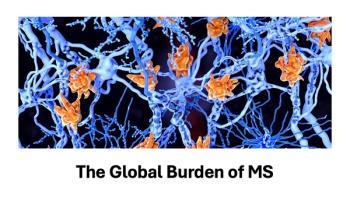
Report Proposes Noninvasive Method to Measure PD-L1 in NSCLC
If the preliminary findings are validated in larger studies, the method could help clinicians determine which patients are candidates for immune checkpoint inhibitor therapy.
A new report suggests there may be a less invasive way to determine which patients with nonsmall cell lung cancer (NSCLC) would be good candidates for immune checkpoint inhibitor therapy.
In a study
NSCLC is the most common type of lung cancer, accounting for about 85% of all lung cancer diagnoses. Immune checkpoint inhibitor therapy is widely seen as a major breakthrough in the treatment of patients with advanced NSCLC, but the therapy leads to long-term responses in a subset of patients, estimated at between 20% and 50%. The main method of trying to identify patients likely to respond is measuring expression of the checkpoint target PD-L1. Previous studies have suggested that PD-L1 positivity is predictive of higher response rates and longer survival.
“However, measuring PD-L1 by IHC (immunohistochemistry) requires surgical or biopsied tumor specimens, which are collected through invasive procedures and associated with risk of morbidities,” wrote corresponding author Matthew B. Schabath, Ph.D., of the
Schabath and his team wondered if there could be a simpler way to achieve the same goal of identifying candidates for immune checkpoint inhibitor therapy. They noted that quantitative imaging has shown that disease features such as shape, size, voxel intensity, and texture “are strongly associated with gene and protein expression in NSCLC.” Signatures from the intratumoral region and the peritumoral region, in particular, have been found to contain useful information about the expression of markers like PD-L1, they added.
“These observations suggest that PD-L1 expression might be tractable by radiomics analyses of Fluorine 18 (18F)−fluorodeoxyglucose (FDG)-Positron emission tomography (PET) scans,” they wrote.
Schabath and colleagues used images and data from a cohort of 697 patients with NSCLC and then used machine learning to develop a “deeply learned score” to measure PD-L1 expression status. Next, they used the model to predict response and outcomes in two retrospective and one prospective test cohorts of patients with advanced NSCLC who were receiving immune checkpoint inhibitor therapy.
The investigators found that the deep learning score accurately discriminated between PD-L1 positive and negative patients and was “indistinguishable” from immunochemistry-derived PD-L1 status in its ability to predict progression-free survival and overall survival.
Schabath said the study required extensive training, testing and validation, so he was excited to see their hypothesis prove correct. “Certainly, the best designed research study can yield less than stellar results,” he told Managed Healthcare Executive.“As such, our team was pleasantly surprised that all this extensive effort led to the DLS (deep learning score) performing so well in predicting progression-free survival and overall survival.”
Still, Schabath said a number of hurdles remain before the noninvasive method can replace the existing paradigm. First, he said, a multicenter prospective clinical utility trial would be needed to support the use of deep learning score in clinical decision-making.
Next, he said, the deep learning score would need to be integrated into current radiology and oncology workflows, something that would likely take place through industry-academia partnerships.
“We envision the DLS would be embedded directly into a PACS (picture archiving and communication system) and would provide immediate results to the treating oncologist,” he said. Once those hurdles are cleared, Schabath said he expects clinicians would be open to the new system because of its speed, reliability, and lower cost.
Newsletter
Get the latest industry news, event updates, and more from Managed healthcare Executive.






















































